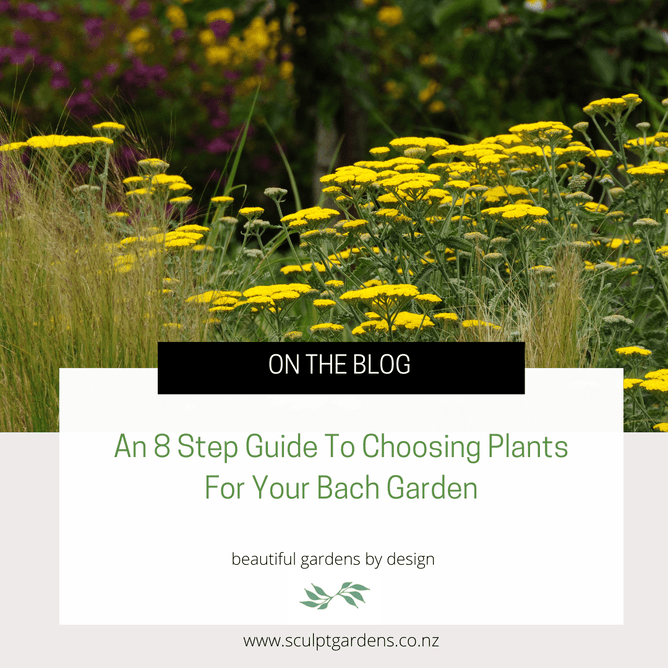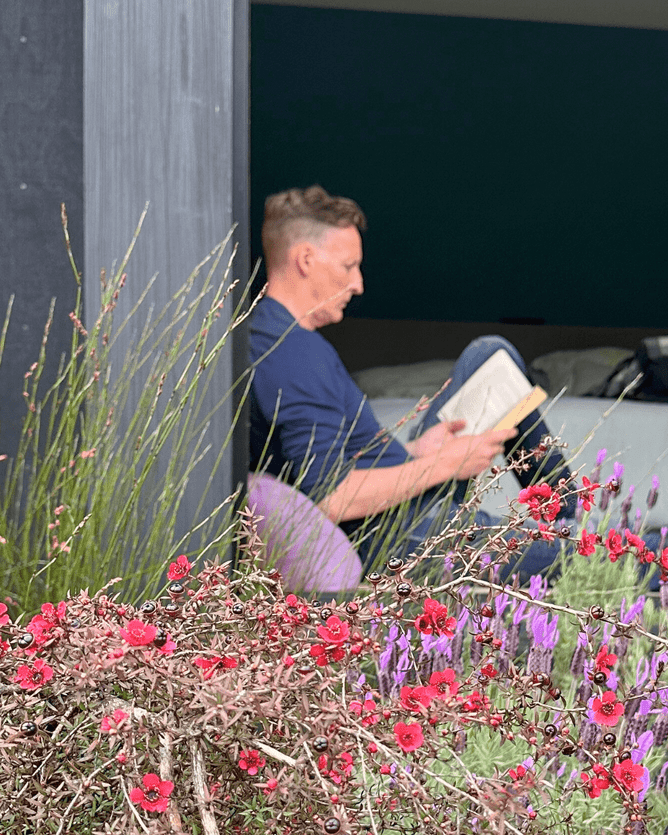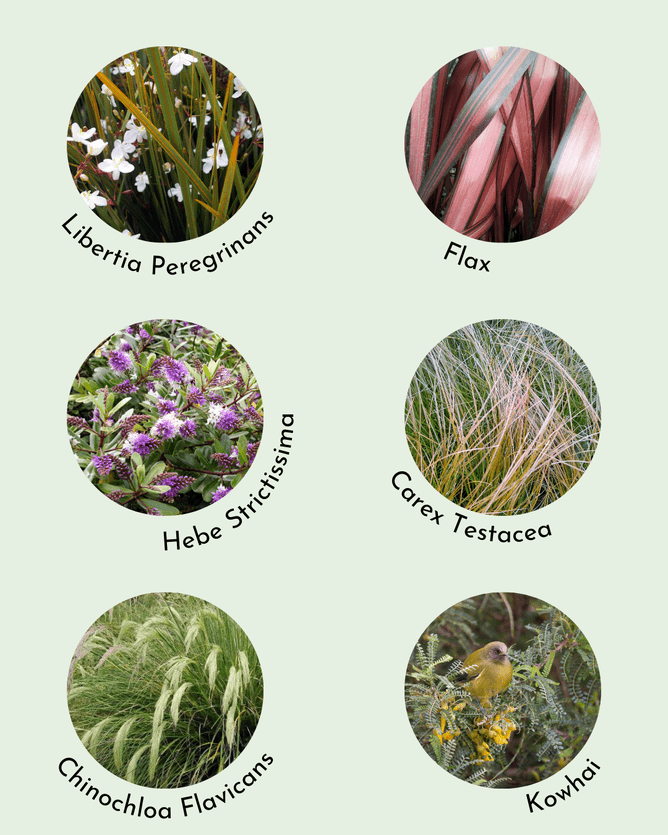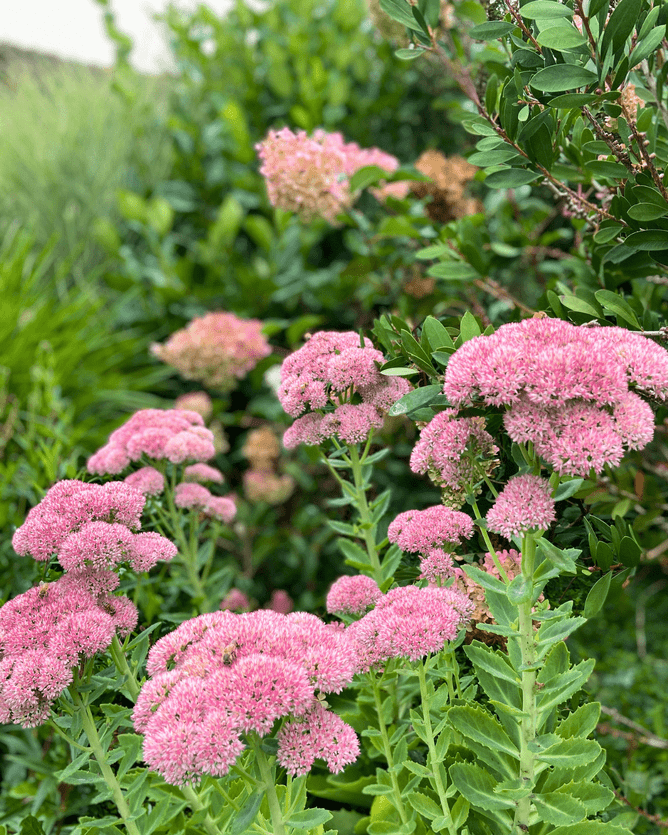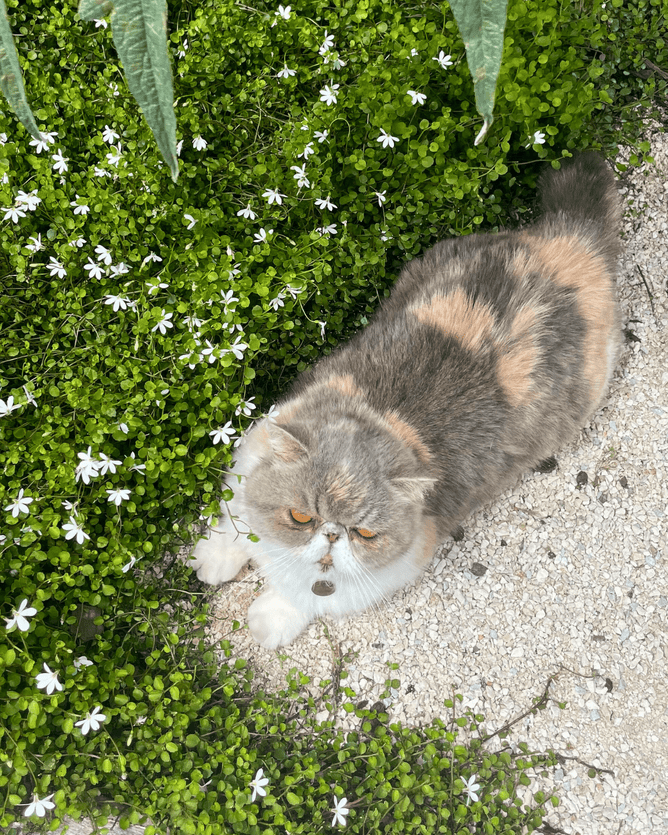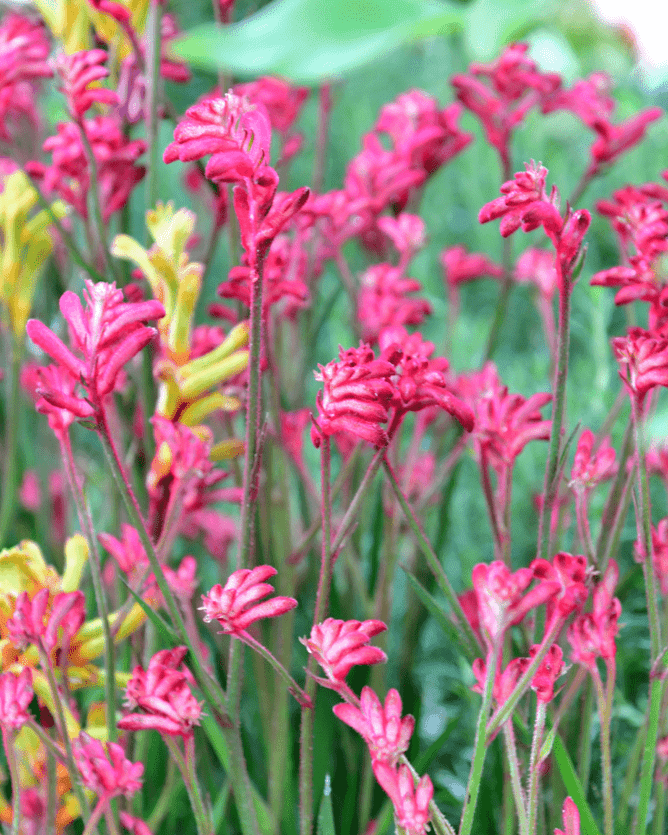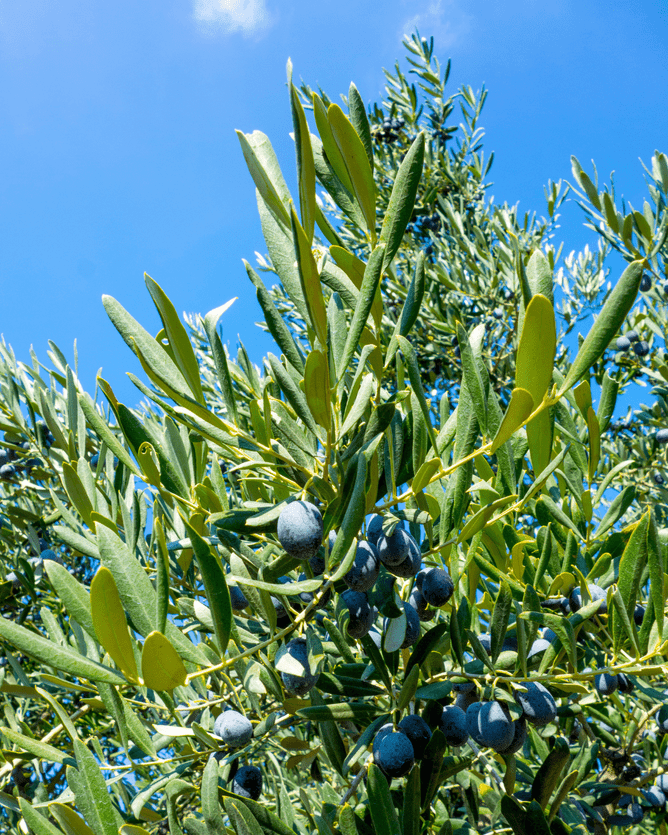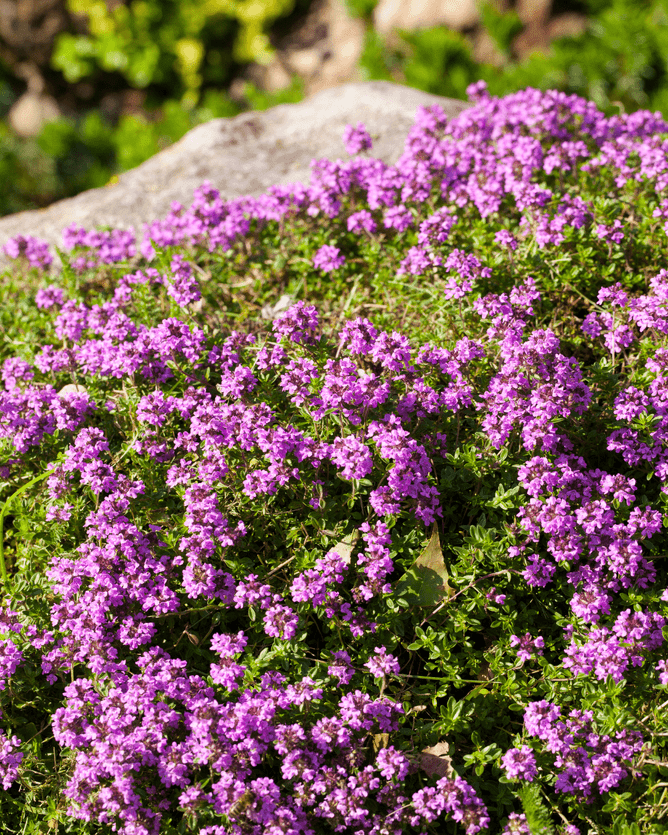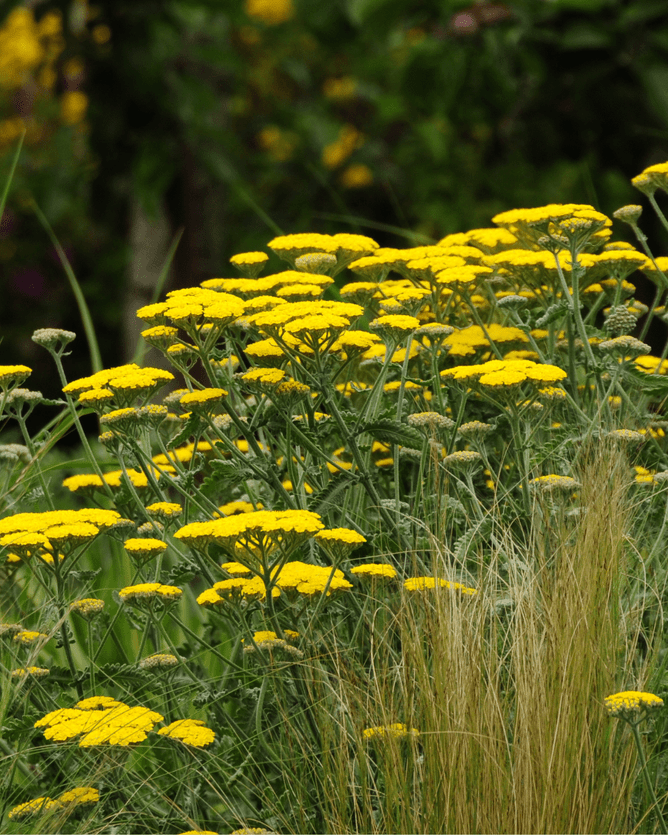When it comes to creating a beautiful and thriving garden for your holiday home in the North Island of New Zealand, selecting the right plants is crucial. The unique climate and soil conditions of the region call for a thoughtful approach to ensure your bach garden remains lush and vibrant year-round. In this 8-step guide, we'll take you through the process of choosing plants that not only survive but flourish in the North Island's environment.
Step 1: Understand Your Garden's Microclimate
Before diving into plant selection, take note of your bach garden's microclimate. Factors such as sunlight exposure, wind patterns, and soil type can vary, even within small areas. This understanding will guide your plant choices and help you create micro-environments tailored to each section of your garden.
Leptospermum 'Red Falls' with Lavender major and Apodasmia similis
Step 2: Embrace NZ Native Flora
One of the best ways to ensure your garden thrives is to incorporate native New Zealand plants. Species like Libertia peregrinans, Hebe strictissima, Carex testacea, Chinochloa flavicans, Flax and Kowhai are well-adapted to the local conditions and contribute to the biodiversity of the area. Native plants also attract native wildlife, enhancing the natural charm of your bach garden.
Step 3: Consider Coastal Tolerance
Many baches on the North Island are located near the coast, subjecting them to salt-laden winds. Choose plants that have a high tolerance for coastal conditions. Coprosma repens 'Poor Knights' and Astelia are two examples of coastal natives that require very little maintenance. These hardy choices will withstand the challenges posed by the seaside environment.
Sedum 'Autumn Joy' with Hydrangea Limelight & Callistemon 'Hot Pink'
Step 4: Plan for Low Maintenance
Given that holiday homes are often vacant for periods, selecting low-maintenance plants is essential. Drought-tolerant varieties like Lavender, Hebe, Westringia, Osteospermum, Achillea, Sedum dasyphyllum and Euphorbia require minimal care and can endure the occasional neglect that comes with a bach lifestyle.
Low maintenance does not mean your plant selection has to be boring. Using a mixture of hardy natives, with low-maintenance long-flowering exotics can create a stunning canvas.
Incorporate groundcovers such as native Muhlenbeckia axillaris, Pratia Blue Star, or Isotoma fluviatilis to create a lush carpet that will help to suppress weeds, retain moisture in the soil, and fill gaps where otherwise mulch is needed.
Pratia angulata with feline var.
Step 5: Prioritise Seasonal Interest
Create a garden that offers visual interest throughout the year by selecting plants with varying bloom times and foliage colours. Incorporate seasonal favourites such as Manuka, Grevillea, Gaura, Verbena and Kangaroo Paws to keep your bach garden colourful & lively in every season.
Australian native - Kangaroo paws
Step 6: Mindful Plant Placement
Place taller plants strategically to provide shelter and shade to more delicate varieties. This not only helps with microclimate management but also adds dimension to your garden. Consider planting larger trees like Nikau Palms or Mamaku to create natural focal points.
If your bach is situated in a windy location, consider a natural shelter belt using attractive natives such as Lemonwood, Lowland ribbonwood, Ake Ake, or Mahoe. Exotics such as Olives and Fejoa are also suitable and stunning options.
Step 7: Choose Edible Options
For a functional and sustainable bach garden, include edible plants like feijoa, lemon, and herbs. Not only do these additions provide fresh produce for your holiday stay, but they also contribute to a more eco-friendly and self-sufficient garden.
Plants such as feijoa, rosemary and citrus require little maintenance once established. To help prevent pest infestations, incorporate plants in your garden that attract beneficial insects. Beneficial insects prey on pests such as aphids, which naturally eradicate unwanted insects without the need for harmful sprays and chemicals. As well as this, beneficial insects help to keep your plants happy and healthy, which will help your garden thrive.
Some plants that attract beneficial insects include Marigolds, Rosemary, Thyme, Basil, Lemonbalm, Achillea, and Nasturtium.
Creeping thyme
Step 8: Water-Wise Selections
Given the variable rainfall patterns in the North Island, opt for water-wise plants like succulents (Ice Plant or Baby Sun Rose), flaxes, and Corokia. This ensures that your bach garden remains lush without excessive water consumption.
Other Australian natives such as Grevillea, Banksia, Lomandra and Westringia are used to the hot, dry climate of Australia and are therefore ideal options for a low-maintenance garden.
Achillea 'Moonshine'
Creating a bach garden in the North Island of New Zealand is an exciting opportunity to connect with the local environment and enhance your holiday home experience. By following these eight steps and selecting plants with care, you'll be well on your way to cultivating a thriving, resilient, and visually stunning garden that complements the natural beauty of the region.
If you would love for us to design your 2024 bach garden, please do not hesitate to get in touch!
Happy gardening!
